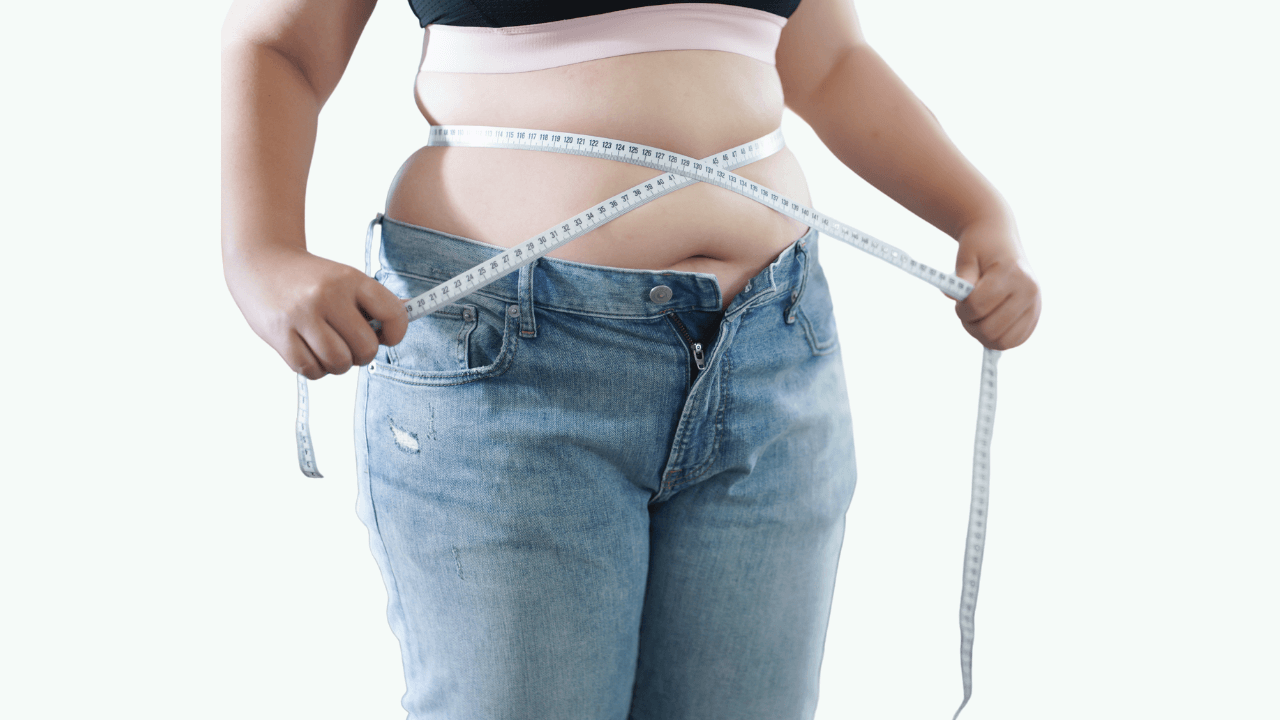

Staying active is necessary for living a healthy life. Exercising makes you physically fit and may reduce the chances of developing metabolic disorders, diabetes, or heart problems.
Walking can be a simple means to increase your daily physical activities. It may help you shed extra inches off your waistline and support weight loss.
Daily walking may also offer additional benefits, including improved immune function, cognitive health, and blood sugar control.
Not sure how many steps you should take daily to lose belly fat? Depending on age, exercise intensity, eating habits, and hormonal health, it could be challenging to assess the most accurate number of steps.
However, there are some specific types of walking and their health benefits that you should also know before increasing your daily step count for weight loss.

Walking exercise may soothe some symptoms of conditions like depression, anxiety, psychological stress, social isolation, and loneliness. It may be a social activity, whether you walk with a friend, join a walking group, or interact with others while walking in your community.
Walking could also decrease stress hormone levels. It may allow you to manage stress effectively, helping improve mood and overall well-being. A simple 20-minute walk could be rejuvenating and help clear your mind while lowering stress.
| Walking Habits | Cardiovascular Benefits |
| Regular walking | Reduces the risk of cardiovascular disease, like coronary heart disease |
| Nordic walking | Improves heart rate and cardiovascular fitness |
| Increasing steps by 1,000 | Brings additional improvements to cardiovascular well-being and might reduce cardiovascular disease risk and add longevity |
Walking could enhance the body’s oxygen intake, leading to an increase in energy levels. It is a healthier alternative compared to relying solely on stimulants such as coffee.
It may increase your heart rate, pump more oxygen and nutrients to your muscles, and help energize you throughout the day.
The increased energy may help you conduct your daily tasks efficiently and motivate you to exercise, aiding belly fat reduction efforts.
Walking improves the body’s ability to use insulin effectively, crucial for maintaining stable blood sugar levels. People with type 2 diabetes could also benefit from regular walking.
Engaging in a walking routine for 12 weeks significantly decreases blood pressure among people with hypertension. Regulating blood pressure may reduce the risk of cardiovascular complications like stroke or heart attacks.
Regular walking could positively impact joint health, especially in older adults with arthritis. It could lubricate and strengthen the supporting muscles of the joints, helping improve motility. Walking exercises may help improve the joint function of the knees and hips.
Retro walking (walking backward) may relieve pain compared to regular walking for adults with knee arthritis.
Walking could help burn off stubborn belly fat and prevent weight gain. Research has shown that brisk walks for 50-70 minutes thrice a week may significantly reduce abdominal and visceral fat. It may also regulate hormones that control appetite and hunger. It could help stabilize blood sugar levels, which also helps in reducing belly fat.
Walking also decreases the presence of cortisol, the stress hormone associated with weight gain and impaired glucose metabolism.
| Benefits of Walking for Burning Belly Fat |
|---|
| Reduces abdominal and visceral fat |
| Regulates hormones for appetite control |
| Stabilizes blood sugar levels |
| Decreases the presence of cortisol |
The American Heart Association recommends aiming for at least 2 hours and 30 minutes of low-intensity exercise (like walking) or about 75 minutes of high-intensity aerobic exercise each week.
Pushing yourself too hard can result in tiredness, muscle soreness, or even injury. Listening to your body and slowing down if you experience pain or discomfort is crucial.
Activities like swimming or cycling could help you burn calories faster and target different muscles, adding variety to your workouts and keeping you motivated.
Exercises like squats, push-ups, and lunges may target the abdominal muscles and tone your midsection. They aid in boosting your metabolism and could assist in your belly fat reduction efforts.
Cutting back on fast foods and sugary drinks might reduce belly fat. Instead, focusing on whole, nutrient-dense foods like fruits, vegetables, lean proteins, and healthy fats might support your fat reduction goals.
Recommended:
Research suggests that one should aim for around 10,000 daily steps to target weight loss and fat reduction.
Splitting physical activity into two daily sessions could be more effective for shedding pounds than a single, extended session.
It is essential to personalize your walking routine based on your body weight, comfort levels, and goals. Adjust the intensity of your walks accordingly and set realistic goals.
| Strategy | Description | Benefits |
|---|---|---|
| Mix up your exercise routine | Activities like swimming or cycling could burn calories faster | Increase calorie burn and prevent boredom |
| Include strength training | Exercises like squats, lunges, and push-ups during your walk build muscle and boost metabolism | Promotes muscle growth and resting metabolism (calories burned at rest) |
| Reduce processed foods and sugar | Limiting your intake of processed foods and sugary drinks may help reduce waistline size | Helps reduce body fat, including belly fat. |
| Try high-intensity interval training (HIIT) | Alternate between periods of fast-paced walking and slower recovery periods to maximize calorie burn | Increases calorie burn and improves cardiovascular fitness |
| Manage stress | Practice yoga or meditation to reduce cortisol, the stress hormone associated with weight gain | Reduce cortisol levels and promote belly fat loss |
| Walk at a brisk pace | Increase your walking speed to increase energy expenditure | Burns more calories and promotes weight loss |
| Cover longer distances or choose challenging terrains | Walking longer distances or on challenging terrains increases calorie burn | Enhances the effectiveness of your walking workout |
| Adjust intensity based on body weight | Consider your body weight and adjust the intensity of your walks accordingly | Allows for a personalized and effective workout |
| Set step goals and track progress | Use a pedometer or step counter to set goals and track your progress | It provides motivation and allows for self-monitoring |
You may experience muscle soreness or injury if you push yourself too hard or abruptly increase your walking intensity. It is suggested to start slow and gradually increase your walking intensity to avoid these issues.
Walking in extreme weather conditions like heat or cold can make walking uncomfortable and pose health risks. Dress appropriately for the weather and walk indoors or at a different time of day if environmental conditions are unfavorable.
Wearing improper footwear might cause blisters or foot pain during walking. Wear comfortable shoes that could fit you well to avoid such issues.
People with certain medical conditions like osteoarthritis may experience joint pain while walking. If you have any pre-existing joint conditions, consider seeking help from a doctor before you start a walking routine.
Must See: What To Do At The Gym To Lose Weight? [6 Best Workouts]
Regular walks and increasing your daily step count may help you lose weight, depending on the duration and your walk intensity. Your diet may also play a significant role in helping you with weight loss.
Walking as a physical activity might be vital for weight management as it supports increased calorie burn. However, balance is essential to avoid soreness, injury, and burnout.
If you’re new to walking, start walking at a light intensity, slowly building up your stamina and endurance for longer walks.
So keep walking and adding more steps to manage weight, but ensure you eat a healthy diet, rest, and stay consistent with your weight loss efforts.
Tyler Read earned an undergraduate academic degree from Sonoma State University, California and is a certified personal trainer (CPT) with NASM (National Academy of Sports Medicine). With over 16 years of experience, Tyler has trained clients both online and in-person.
He is passionate about helping others turn their love for fitness into a career. Tyler has worked with many local and commercial gyms before establishing his successful private personal training business, which he continues to operate.
